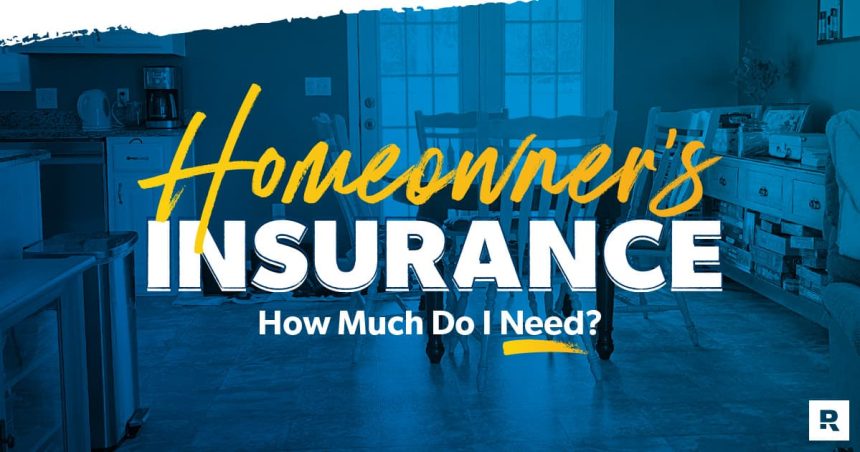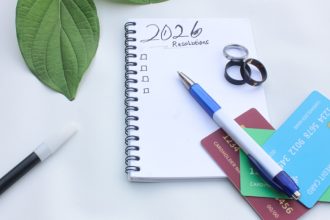- You need enough home insurance to completely rebuild your house and replace all your belongings.
- You should get a replacement cost homeowners policy.
- Don’t stop with a standard homeowners policy. Make sure you have all the extra coverage you may need if you live in disaster-prone areas.
We’ve all flicked on the news to see mile-high flames twisting up from a charred mountainside. And we’ve all seen the next shot of the homes that didn’t escape those flames, and with a sense of sobering gratitude thought, I’m so glad that’s not my home!
And even if your next thought is, How much home insurance do I need? it’s easy to move on to the next thing (What’s for dinner? I’m starving.) while you’re watching the news in safety from your mid-century modern sofa. But the truth is, that could be your home. Maybe not in a forest fire, but some disaster. Industry research shows two-thirds of homeowners don’t have the protection they need, especially considering the rapidly rising home values and construction costs we’ve seen in the last few years.1 If you don’t have enough home coverage, your finances will be turned inside out, along with your life.
So, let’s make sure you know exactly how much home insurance you need.
Table of Contents
Determine How Much Home Insurance You Need
Coverage to Insure Your Home’s Structure
Coverage to Insure Your Stuff
Protect Your Personal Finances
Coverage for Living Expense if Disaster Strikes
Additional Home Insurance Coverages
How Do You Save Some Money?
Do You Have the Right Amount of Homeowners Insurance?
Determine How Much Home Insurance You Need
It’s crucial to have the right amount of coverage for your home. So you’re on the right track if you’re asking, How much should I insure my home for?
Homeowners insurance covers a lot of things, but there are also some things it doesn’t cover, like flooding and certain natural disasters. It can get confusing, but don’t worry—I’m here to help you figure out how much of what you need so you can protect your biggest investment.
|
How Much Homeowners Insurance You Need |
|
|
You want enough home insurance to: |
The coverage that does it: |
|
Rebuild your home structure |
Extended dwelling coverage |
|
Replace your stuff |
Personal property |
|
Cover injuries and damages that happen on your property |
Liability |
|
Reimburse your higher-than-normal living expenses after the loss of an insured home |
Additional living expenses |
I’ll go into each of these in more detail below, but these are main ways homeowners insurance protects you financially.
And heads up, if you have a mortgage, you’re actually required to have a certain minimum amount of dwelling and liability insurance. (If you’re researching homeowners insurance because you’re just starting to shop for a home, check out our free Home Buyers Guide. It tells you everything you need to know about what can sometimes be a pretty complicated process.)
If you already have homeowners insurance, but aren’t sure how much you have, check out your insurance declaration page. This is a really helpful summary from your insurance carrier of exactly what you’re paying for.
Now, let’s figure out how much home insurance you need.
You need enough home insurance coverage to rebuild your home, replace your stuff, cover lawsuits and injuries on your property, and reimburse extra-high living expenses while you rebuild.
Figure Out What Perils Your Home is Vulnerable To
Some policies only cover specific perils (insurance-speak for the bad stuff that can happen to your house).The policy spells out the specific perils it covers like lightning, fire or theft. But if anything else happens—your home is vandalized or a tree falls on it, for example, you’re out of luck. Named-peril policies (called HO-3 policies in the insurance biz) are cheaper—and now you know why.
On the other hand, an open-perils policy (usually an HO-5 if we’re getting technical) covers every hazard unless specifically excluded. You probably already know what I’m going to say, but this is the kind of policy you want! Make sure the policy you buy doesn’t exclude perils that are likely where you live (and if you can’t find one that doesn’t, you may have to buy extra insurance called a rider). If you already have homeowners insurance, check your policy’s list of exclusions to see what you’ll be on the hook for.
Research Local Building Costs
Next on your list: research local construction costs. How do you do that? In the words of moms everywhere, Google it! Depending on your area, you may be able to find rough numbers for how much it costs to build per square foot. But the grade of construction you choose will impact construction cost.
Another option: Rather than trying to guesstimate on your own using ballpark numbers, contact a construction company in your neck of the woods to see if they have the figures. Some even have free quotes offered on their websites.
Understand Replacement Cost
If you’re going to buy a policy that covers the cost to replace your home, you’ll need to know how much your home will cost to, you know, replace.
Calculating the replacement cost can be tricky—just like calculating how upset your wife will be if you tell her what you really think about the new paint color on the living room walls (I know my suggestion of Snowbound was the safe choice, but it was also the right choice). But it’s up to you to get it right—here’s how.
How do you calculate the replacement cost?
- Take the square footage of your home and multiply it by local construction costs. So, if the average cost to build a home in your area is $150 per square foot, and you own an average 2,000 square foot home, it’ll cost about $300,000 to rebuild your home.
- Next, use an online calculator to get a second estimate. There are free online calculators that use your home’s square footage, building materials, and number of rooms to give you a good replacement cost estimate. Insurance companies often have these on their websites.
- Third, once you have your own estimates, ask a professional to give you theirs. An expert independent insurance agent, like one of our RamseyTrusted pros, will know your area and can help you calculate a very close estimate of the replacement cost.
What factors affect the replacement cost?
When you finally have an accurate replacement cost, you should check it every couple of years. Plenty of factors—both in your control and not in your control—can affect the cost to rebuild your home.
New Building Codes That Take Effect After Your Home was Built
If a natural disaster wipes out your current home, your new home will have to meet up-to-date building codes, which could require you to pay for new features or materials. Insurance companies sometimes offer building code coverage, which means they’ll pay for whatever the new codes require—so ask your insurance agent if that’s something you could add to your policy.
Remodeled Kitchens
Home is where the kitchen is (at least in my house), so it’s no wonder kitchen renovations change home values. Granite countertops, farmhouse sink, scratch-resistant flooring—whatever fancy upgrade you’ve added, adjust your homeowners insurance to match the increase in your home’s value.
Additional Rooms and Structures
Maybe you finished your basement to add bedroom space for your growing family. Or maybe you added a garage, a workshop or a screened-in porch. New rooms add value, and unless you update your homeowners insurance to account for these additions, you risk having to pay for them again. No one wants that.
Rising Prices of Building Materials and Construction Costs
Bricks, timber and stone cost more over time, especially if a natural disaster has wrecked your part of town, stirred up demand, and lowered supply. Along with building materials, workers’ wages may increase, and construction costs will often go up with them.
Old and Hard-to-Replace Features
“They don’t build ’em like they used to!” Yep, that’s for sure. Building styles change over time, and so do the number of carpenters who know how to make arched windows and elegant ceiling molds. If your house has unique features, especially ones that require specialized craftsmanship, you may need to pay for extra coverage to have them replaced.
Conduct a Home Inventory of Your Personal Items
Many of us way underestimate how much we own. Maybe it’s because we buy things slowly over time—a leather armchair here, a floor-to-mattress dog ramp there—so we lose sight of their value. The risk, then, is to underinsure personal property and end up with a shock when the reimbursement check doesn’t replace the losses.
To keep this from happening, make an inventory of everything you own that has value. That’s right. Everything. Make a game out of it! Start in your bedroom and work your way to the garage. Take photos (or better yet, a video!) of each possession, especially more expensive items. This may sound like a lot of time, but what takes a few hours to inventory could take months of income to replace. So, be detailed! At the very least, take a photo of every room from each corner. It will help jog your memory about what’s in there.
As you go through all your stuff, it will also help you figure out if you have any really expensive items you need extra insurance for, which brings us to . . .
Create a List of Your Expensive Items
As you make your inventory, separate your most expensive items. Do you own a Monet? Or some really nice audio equipment that could blow the whiskers off your cat? Write down the estimated replacement costs of those items and ask your insurance agent if you need an additional policy (called scheduled personal property) specifically for them.
Protect your home with the right insurance.
Having a RamseyTrusted pro by your side means you’ll get quality insurance coverage without breaking the bank.
Connect With a Pro Today
Coverage to Insure Your Home’s Structure
When most people think of home insurance, they think of a policy to pay for the actual building if it gets blown over. That’s what we’re talking about here (although there’s so much more to it).
Dwelling Coverage
Dwelling coverage promises to rebuild your home if it burns down, crumbles in a windstorm, or gets crushed by a falling satellite. (The insurance business calls these perils or hazards.) You know, all the usual nightmare stuff we hope never happens. When you hear dwelling coverage, think the structure of your house, all the materials used to build it, and anything attached to it, like a garage, deck or front porch.
So how much do you need? Your dwelling coverage should equal the replacement cost of your house, which is the amount of money it would take to build a replica of your home.
At the bare minimum, you should definitely have replacement cost coverage (or RCV) for your home, which is what pretty much all standard policies offer anyway. It can fall short in some situations since there’s a strict coverage limit. And if construction costs have risen a lot in your area, that limit might not fully cover your cost to rebuild.
Some insurance carriers offer something called guaranteed replacement cost coverage. This is exactly what it sounds like: They’ll pay for the replacement of your house no matter how much construction costs have risen. Yes, please.
Guaranteed replacement cost coverage is the absolute best coverage you can get—because it guarantees coverage for every possible outcome! But this kind of top-shelf coverage can be hard to find, and many companies don’t even offer it.
On the other hand, most companies do offer a handy option called extended replacement cost. It extends your coverage by a certain percentage, that could be anywhere from 25% to 100% to help cover increased replacement costs. Even a 25% extension on your payout is nothing to sneeze at, but you should always get the largest percentage possible, and 100% is the ideal.
Other Structure Coverage
Your typical home insurance policy will usually offer 10% of your dwelling coverage toward replacement of other structures. What are other structures? Good question. Your dream woodworking shop with an HVAC is included. So is your garden shed with that hedge trimmer from the ‘70s and a family of brown recluses in the back corner. Other structures include barns, fences and detached garages. I’ll have to get back to you on outhouses, for the real woodsy folk out there.
You should evaluate your structures to see if 10% of your dwelling payout will be enough to cover them. If your building is complex, chances are 10% won’t be enough.
A big trend in homeownership and real estate is owning an accessory dwelling unit (or as the cool kids call them, ADUs) or in-law apartment. But these things, which are often essentially small second houses in the backyard, are expensive, and you might have to buy extra coverage to get it protected.
Whether the ADU, (aka granny flat, guest house, carriage house) is attached to your house or not makes a big difference. If it’s something like a finished attic space or bonus room, your homeowners policy can cover it as long as your limit includes the value of the ADU. If it’s detached, however, you may need to purchase extra coverage. So, much like therapy, attachment style is the root issue here.
Insurance around ADUs differs by state. Make sure to talk to your local independent insurance agent about any ADUs you own as well as other structures. They can help you get the right coverage.
Coverage to Insure Your Stuff
Now that you have coverage for the structure of your home, let’s get coverage for your stuff—what most homeowners insurance policies call personal property coverage.
Personal Property Coverage
Personal property applies to your furniture, appliances, clothes, sports equipment, electronics, and even the food in your refrigerator. (This coverage is, after all, personal, and it would be a shame to lose those two dozen free-range eggs you bought from Costco.) It covers your stuff if it’s destroyed, stolen (egg thieves!) or vandalized.
You should have enough personal property coverage to replace all your belongings (but maybe not the viral TikTok stepper machine you fell for).
Most standard policies offer 50% of your dwelling coverage in personal property coverage, but it can go higher. As you’re figuring out how much personal property coverage you need, ask yourself, If I lost everything, how much would I need to get back on my feet? A local RamseyTrusted pro can help you figure out what different companies offer and help you get more if you need it.
Actual Cash Value vs. Replacement Costs Coverage
When it comes to personal property coverage, there are two kinds to consider: actual cash value (ACV) and replacement cost.
ACV gives you what your stuff is worth on the day it went up in smoke (or whatever tragedy struck). In other words, depreciation is factored in. So, whatever you originally paid for that hand-knotted New Zealand wool rug is not the amount you’ll get from the insurance company. You’ll get something closer to the Facebook Marketplace resale price.
Replacement value, on the other hand, forks over whatever you need to get a new one—including inflation. If you can, definitely go with replacement cost coverage. It will mean your rate is higher, but it’ll be worth it!
Coverage for Valuable Items
Like we mentioned earlier, your insurance policy usually pays for your stuff up to a percentage of your dwelling limit. This means if you have some really expensive stuff (think furs, jewelry, a fine art collection, a Dwayne “The Rock” Johnson–level home gym, etc.) you’ll need to buy extra coverage for that. You can get what’s called a scheduled personal property rider to cover extra-expensive stuff—you’ll schedule specific items like your great-grandmother’s five-carat diamond ring to be covered for more.
Protect Your Personal Finances
Now that your home and possessions are properly insured, the next step is to protect your personal finances by loading up on liability coverage. The threats to your bank account don’t just come from storms and fires. People getting hurt on your property and potential lawsuits are big, gaping vulnerable spots you need to get covered ASAP.
Personal Liability Coverage
Liability is the part of your homeowners insurance that covers your tail if someone gets hurt on your property. Anything can happen: a sprained ankle from a slip on the stairs, a broken arm from falling out of a tree fort, or a dog bite from Snowball (the pet you always said would never hurt a fly). Then, before you know it, you find yourself stuck in a legal bind that drains your bank account.
But wait! There’s hope. Homeowners insurance will cover accidents that happen on your property, so you won’t have to pay expensive medical bills or lawsuits from people who read too many cheesy billboards that say “Took a bad fall? You know who to call!”
Speaking of pain, did you know not all dogs are covered under homeowners insurance?
That’s right. In fact, if you have a dog whose breed has been flagged by insurance companies as “high-risk,” any incidents involving your dog won’t be covered under your homeowners insurance. For example, my adorable little French bulldog, Olive, couldn’t hurt you if she wanted to—but even if she did, she’s not considered a high-risk breed.
Just so you know, some carriers consider these dog breeds high-risk.
- Pit bulls
- Doberman pinschers
- Rottweilers
- Chows
- Great danes
- German shepherds
- Siberian huskies
- Alaskan malamutes
- Wolf-dog hybrids
- Any mix of these breeds
If you just have to have a wolf-dog hybrid, best of luck, because you’re on your own.
For everything else, most homeowners insurance policies have a minimum of $100,000 in liability coverage. But you should buy at least $300,000—and $500,000 if you can (because when it comes to fighting the biggest ambulance chasers in the country, coverage size matters). Liability is the greatest buy in the insurance world, so get as much as you can afford.
You should buy a $300,000–500,000 limit in personal liability on your home insurance policy.
Consider an Umbrella Insurance Policy
You should also look into adding an umbrella policy if you have a high net worth (above $500,000). This supplemental policy is just one more layer of liability to protect you and your assets. It kicks in once you’ve reached the limits on your standard policy.
Because an umbrella policy isn’t a standalone policy, you must already carry homeowners, auto or other kinds of insurance to get one.
Medical Payments Coverage
Another handy feature of your homeowners insurance policy is it pays for medical bills if anyone is injured on your property. This means if your neighbor comes over for coffee and spills her cup, her trip to Urgent Care or the ER for minor burns will be covered up to the limit stated in your policy.
Whether you pick a lower limit or a higher one should depend on your risk for this kind of incident. Do you have a dog? Do you have a lot of people over? Do you have a tricky staircase? If you do, go with more.
Coverage for Living Expense if Disaster Strikes
Imagine a natural disaster destroys your house. How long would it take to rebuild it? A few months? A few years? How much extra money will you spend sleeping in hotels and going out to eat while you wait for your home to be rebuilt?
Hopefully, nothing—if you have additional living expenses (ALE) coverage (also called loss of use coverage). ALE is like a super emergency fund: If you and your family were left with nothing after an accident—nowhere to live, no kitchen to use—ALE would reimburse you for the added cost of living without a home.
The key word here is added cost of living. For instance, let’s say you cook all your meals, and you pay around $500 a month for groceries. One day, a fire destroys your kitchen, and you’re suddenly forced to eat out. Your monthly food bill jumps from $500 to $900. ALE would reimburse you for the extra $400 hit to your food budget.
Most homeowners insurance policies include ALE and use a percentage of your extended dwelling coverage to calculate what you’ll get—usually from 20–30%. For example, if your extended dwelling coverage is $200,000, your insurer might give you $40,000 (20%) for ALE. If you have a large family and you believe your ALE would be high, ask your insurance agent how you can get more ALE.
Additional Home Insurance Coverages
It may sound like we’ve covered every possibility at this point, but there could still be some gaps in your coverage.
What if you live in California with a view of the mountains and the San Andreas Fault? What if you own a bungalow bordering Louisiana’s levies? Insurance companies don’t cover certain natural disasters like earthquakes, floods, hurricanes (if you’re on the coast), and sinkholes (except in Florida and Tennessee). You can and should buy separate insurance for those events if they’re common in your area.
Insurance companies in some areas sell hail and wind protection separately or require a separate deductible for damage from those perils.
Insurance coverage also gets picky about certain types of damage caused when Murphy comes for a visit. Water damage from a clogged main sewer line or off-property sump pump isn’t covered, but you can buy water backup coverage separately if this is a concern.
Here’s a list of extra coverages you might want to consider:
- Earthquake, sinkhole, hurricane or flood coverage
- Wind/hail coverage
- Building code coverage
- Extended replacement cost coverage
- Water backup coverage
- Scheduled personal property
- Extended yard and garden coverage
How Do You Save Some Money?
It’s no secret I love saving money. But when it comes to home insurance or coffee makers, I don’t cheap out. Some things, like high-quality home insurance or Nespresso machines that help me channel my inner George (Clooney), are worth the extra dough.
But that doesn’t mean you can’t also look for ways to save.
Your deductible, the cash out-of-pocket you pay before insurance kicks in, is the biggest area you can save on your homeowners insurance. The higher your deductible, the lower your rate.
Other ways you could save:
- Bundle your auto or other insurance with your home insurance.
- Look for discounts for things like loyalty, improvements, added safety features and security systems (unfortunately, your dog doesn’t count).
- Pay your premium in full.
- Replace damaged parts/items with more energy efficient ones to get a green improvement reimbursement.
Do You Have the Right Amount of Homeowners Insurance?
Hopefully the question How much home insurance do I need? has been answered. Your next move is to figure out if you have enough or make sure you buy the right amount. Choosing the right independent insurance agent is a big part of that. You want someone who knows their stuff and can guide you through the process of insuring your biggest investment.
Our network of RamseyTrusted pros will walk you through exactly how much home insurance you need and help you choose the right coverage—from dwelling to personal property, all the way to liability and additional living expenses. They can even check if you can save any money by bundling home and auto insurance together.
One of our pros helped Patricia M. get the exact personal property coverage she needed.
“We worked with a RamseyTrusted pro and are very happy,” she said on the Ramsey Baby Steps Facebook Community Group. “When it came time to renew our homeowners and auto insurance, he saved us hundreds of dollars. He even found us affordable insurance for our collections.”
One final thing before I let you figure out what’s for dinner: The value of your insurance policy won’t automatically increase along with the value of your home, so it’s important to check up on your policy with your agent every year to make sure you have enough coverage.
Read the full article here
















